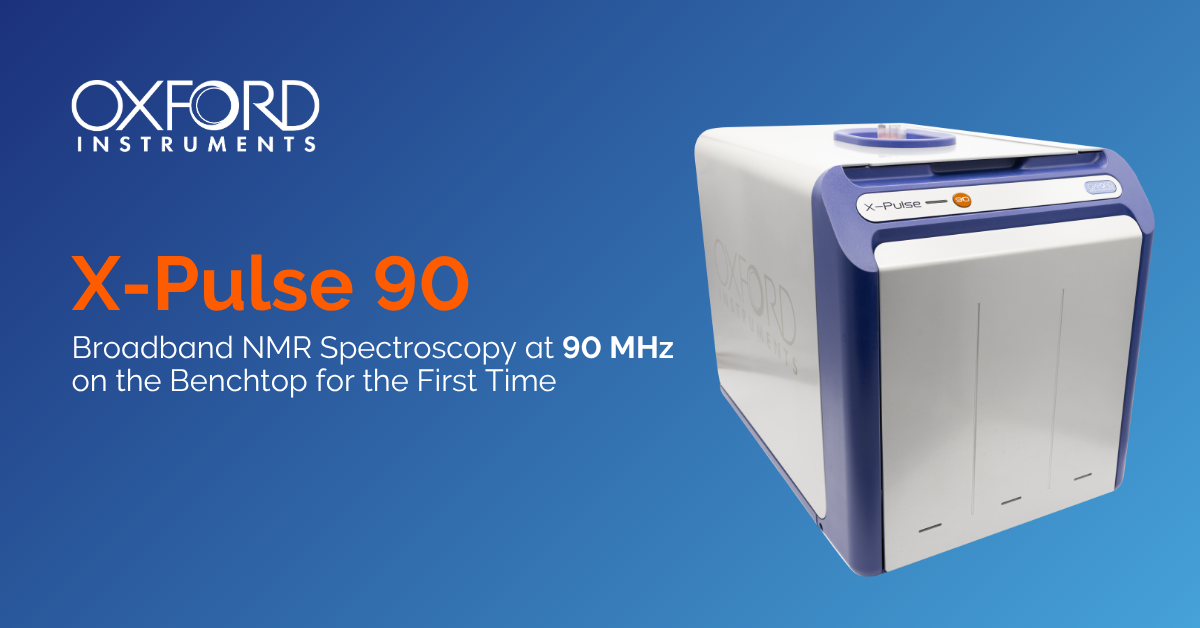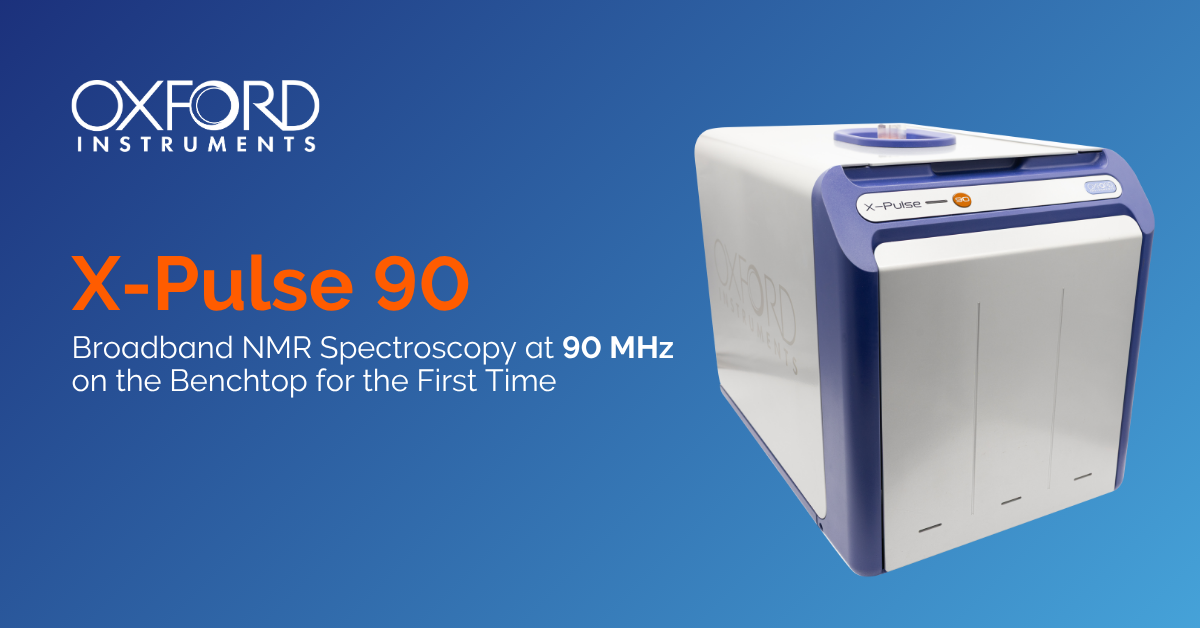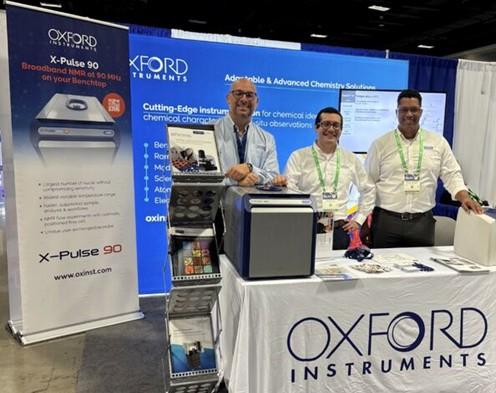The 12th August 2025 was a significant date for the nuclear magnetic resonance (NMR) team at Oxford Instruments, as we launched our new NMR spectrometer, X-Pulse 90 to the market.
This new benchtop instrument operates at 90 MHz and is the first to offer fully tuneable broadband capability (i.e., measurement of 38 possible atomic nuclei) at this magnetic frequency, which is equivalent to a magnetic field strength of 2.1 Tesla. This represents a major advancement in our NMR product offering and will provide customers with a powerful leap in performance.
A month on since the launch gives me an opportunity to reflect on how we got to this point and what has been happening since X-Pulse 90 entered the market.

What came before..
The previously developed generation of X-Pulse benchtop NMR spectrometers has a magnetic frequency of 60 MHz (1.4 T magnetic field strength). Although this magnetic field is perfectly suitable for a wide variety of applications, being able to perform NMR spectroscopy at a higher magnetic field brings the following performance benefits:
- Higher resolution and accuracy - peaks that overlap in NMR spectra measured with a lower magnetic field can be separated and resolved owing to the increased spectral dispersion at higher field. This enables more accurate identification and measurement of chemical species and concentrations present in samples.
- Increased sensitivity - lower concentrations of sample/atomic nuclei of interest can be detected and accurately measured.
- Speed - sample analysis can be performed more rapidly, due to the higher signal-to-noise ratio (SNR) achieved at higher magnetic field.
Development of the X-Pulse 90
With the development and implementation of a different magnet design, the new X-Pulse achieves a 90 MHz (2.1 T) magnetic field strength, whilst maintaining the benefits of being relatively lightweight (115 kg), cryogen free, and suitable for use in standard laboratory or manufacturing environments. For example, X-Pulse 90 can be positioned on a benchtop, in a fume cupboard, or moved around between locations on a moveable workstation, which can be purchased as an optional extra with the instrument.
A primary aim when developing X-Pulse 90 was to retain the modularity, flexibility, and upgradeability of the existing X-Pulse product. This allows us to offer some unique features and benefits to our customers:
- Fully tuneable broadband capability, meaning that one X-Pulse instrument can measure 38 different atomic nuclei.
- User exchangeable NMR probes, enabling greater flexibility and easier cleaning.
- Broadband capability combined with the unique exchangeable NMR probes making it possible to analyse the largest number of nuclei without compromising ¹H and ¹⁹F sensitivity.
- Variable temperature options that can go below room temperature (full range = 0-60 °C).
- A flow NMR system that operates with the most preferable magnetic gradient orientation (orthogonal to the direction of flow) for the use of gradients during flow, enabling real time reaction monitoring in flow experiments.
These advanced capabilities make X-Pulse 90 an ideal NMR instrument for a wide variety of applications, such as chemical research and manufacturing, battery research and development, polymer chemistry, and pharmaceutical quality control.
Post launch activities
Since the X-Pulse 90 launch we have been engaging with many customers, and our sales and applications teams, as well as our channel partners have attended several conferences and events. The first event where we showcased the X-Pulse 90 was the ACS Fall 2025 in Washington, D.C., just the week after the product launch.

Michael Gardner, Aleksandar Krsmanovic, and Erik Zavala on our booth with the X-Pulse 90 at the ACS Fall Meeting 2025
Mike Gardner from our US sales team reported the following feedback "Since the X-Pulse 90 launch, we’ve received inquiries from larger academic institutions and some government offices saying they had previously ruled out Oxford Instruments because of the field strength, but now we can offer 90 MHz their curiosity about what makes the X-Pulse different has been eye opening. For these customers, our additional strengths matter more and our focus on performance, versatility, and modularity – along with a true broadband range of available nuclei – have led to very fruitful and positive conversations so far!"
More recently, the X-Pulse 90 featured at JASIS in Japan, and our sales and applications team attended SMASH – the small molecule NMR conference – where attendees had the opportunity to see an X-Pulse demonstration
Internally we are continuing to develop the X-Pulse product line, so please keep an eye on our website and social media channels for further announcements.
Finally…
As I am sure you can imagine, to get to this point a lot of ingenuity and hard work has been going on behind the scenes. It is fantastic to now be able to offer the increased performance capabilities of the X-Pulse 90 to customers, and we are delighted with the very positive feedback we have received so far. Going forward we are very excited to see where this new product takes us and our customers.



